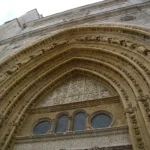Vatican City, a sovereign city-state steeped in spiritual and cultural wealth, holds a treasure trove of artistic and historical marvels within the Vatican Museums. Renowned for extensive collections amassed by centuries of papal patronage, these museums offer an immersive experience into Renaissance artistry, religious art, and architectural evolution. Visitors worldwide come searching for the artistic prowess of Raphael, the intricate frescoes of Michelangelo, and countless other timeless works. Navigating the Vatican Museums while absorbing their profound significance is a journey rewarding every art enthusiast and cultural explorer.
Table of Contents
Getting to the Vatican Museums: Seamless Routes and Nearby Travel
Situated within the walls of the Vatican City, the museums are easily reachable from Rome’s bustling center. Travelers arriving from Rome’s main train station, Termini, can take the metro Line A directly to Ottaviano-San Pietro station, a short walk from the museum entrance. Alternatively, frequent bus services connect various points in Rome to the Vatican area, offering convenient access without urban stress.
To enrich your journey through the Vatican Museums, visiting the nearby Vatican City walking guide reveals quiet streets and hidden spots worth a calm stroll afterwards.
For those flying into Rome’s Fiumicino Airport, shuttle buses or taxi services provide straightforward transfers to Vatican City. Once near, expect a well-signposted pathway guiding you to the iconic museum entrance, nestled along Viale Vaticano.
Visitors seeking comfort during their stay will find ample nearby accommodation options, ranging from cozy guesthouses to charming boutique stays, all within walking distance of the Vatican’s walls. To complement the visit, local eateries offer traditional Roman cuisine-sample classic pasta dishes or sip espresso at charming cafés overflowing with quiet Roman charm.
Explore nearby accommodations and dining options around the Vatican Museums in our guide on Vatican Museums: A Must-See Cultural Landmark in Rome.
Tracing the Vatican Museums’ Great Legacy
The Vatican Museums are not mere galleries; they symbolize centuries of artistic patronage begun in the early 16th century with Pope Julius II’s profound commitment to art. His vision to preserve and showcase Christian and classical masterpieces laid the foundation for these museums. The collection grew as successive pontiffs enriched it with gifts and acquisitions from all over the world, reflecting evolving religious and artistic narratives.
Remarkably, the museums tell a story stretching from Egyptian artifacts to Renaissance painting, culminating in awe-inspiring architectural features like the Bramante Staircase and the Sistine Chapel ceiling. Michelangelo’s ceiling fresco, with its vivid depictions from the Book of Genesis, represents a mutable dialogue between divinity and human creativity, embodying art’s transformative power.
For those captivated by Renaissance art and architecture, the Uffizi Gallery in Florence presents another iconic treasure worth exploring nearby.
Planning Your Visit: Best Times and Entry Essentials
Choosing the right moment to enter the museums can significantly enhance your experience. Early weekdays from Monday to Thursday generally present the calmest atmosphere, avoiding the weekend crowds. Visiting in the late afternoon allows for more thoughtful engagement with fewer distractions, granting ample time to savor fine details often overlooked.
During busiest months, pre-booking tickets is strongly recommended. The Vatican Museums operate on a timed-entry basis, accessible best through official online booking platforms to avoid long queues and ensure entry. Reservations often include guided tours that illuminate art pieces with enriching historical context, making comprehension more vivid and captivating.
Guided Tours and Reservation Requirements
Guided tours differ in length and focus-some concentrate on the Sistine Chapel and Raphael Rooms, while others provide thorough explorations of the museum’s broader collections. Many tours offer multilingual options, perfect for non-native speakers to thoroughly enjoy the depth of the exhibits.
Booking in advance is indispensable due to the museums’ global popularity. Online tickets guarantee entry at your preferred time and reduce wait times markedly. Besides online options, onsite ticket purchases are available but risk long lines, especially during peak seasons.
Unexpected Delights and Architectural Wonders
Beyond the famous corridors and galleries, the Vatican Museums house lesser-known gems. For instance, the Gallery of Maps showcases extraordinary cartographic murals from the 16th century, blending art and geography. The intricate craftsmanship in the gallery’s ceiling vaults reveals Renaissance artistry’s devotion to symmetry and storytelling.
Architecturally, the museums offer stunning transitions-from classical colonnades to elaborate Baroque decorations-each space narrates epochs of design evolution, a true delight for architectural photographers and enthusiasts of structural detailing.
Taste of Rome Next to the Vatican Museums
After absorbing centuries of art, stepping out for genuine Roman flavors deepens the visit.邻近区域的小巷里散布着意大利传统美食店,从披萨到新鲜意面,应有尽有。传统市场旁的糕点店甜点和咖啡馆内手工制作的意式咖啡更是一绝,完美为此行添加小确幸。
周边的餐厅虽多数面向游客,但通过稍作探索,可以找到一些拥有地道环境、且价格合理的佳肴场所。
Official Resources for Seamless Planning
For comprehensive information regarding tickets, opening hours, special exhibitions, and updated visitor rules, the Vatican Museums maintain a carefully curated online presence accessible at Vatican Museums Official Site. This portal delivers the latest announcements and interactive guides that can greatly assist in tailoring your visit efficiently.
Last Thoughts on Immersing in Vatican Museums
Visiting the Vatican Museums offers more than viewing art; it invites contemplation of the centuries-old dialogue between spirituality and artistic expression. The polished floors, the serenely lit rooms, and the bold strokes of Renaissance masters together create a rhythm that compels quiet reverence.
This encounter between visitor and masterpiece is a testament to human creativity preserved within the world’s smallest state-a silent celebration of faith, craft, and history invited to all who walk its grand halls.

- Cortile della Pigna (Vatican Museums) September 2015-1 by Alvesgaspar on Wikimedia Commons – cc by-sa 4.0
